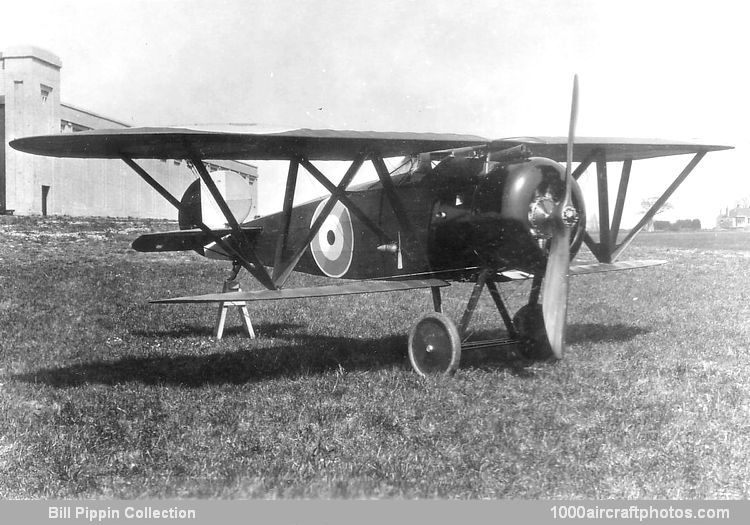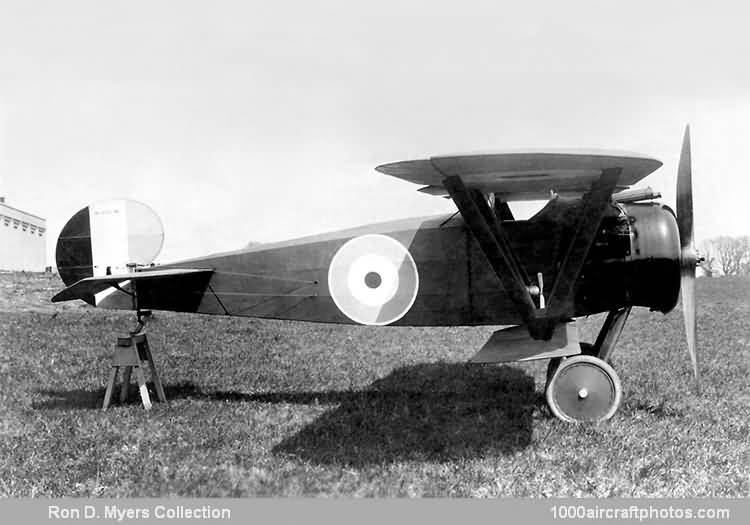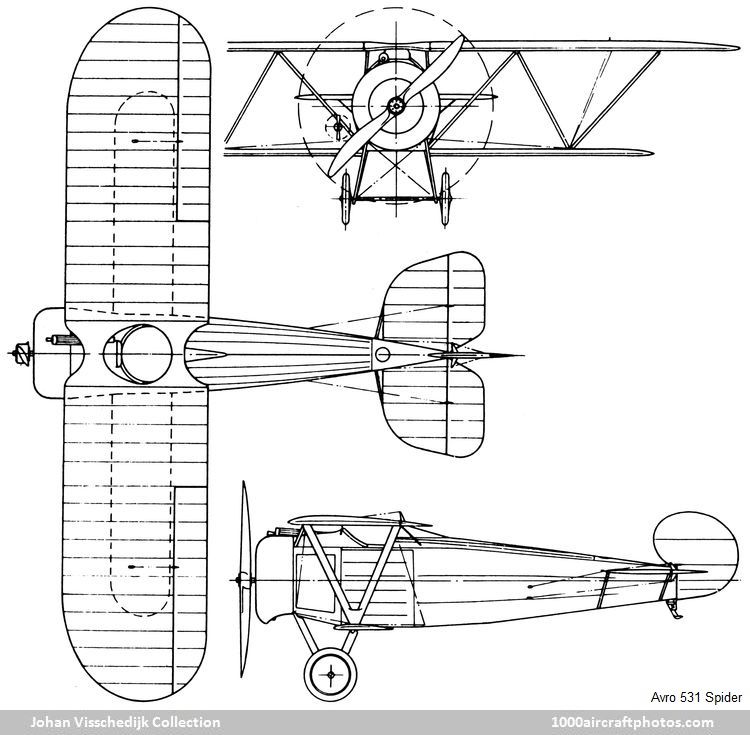08/31/2014. Remarks by Johan Visschedijk: "First flown at Hamble in April 1918, the Avro 531 Spider was an unsponsored private venture single-seat fighter in which many Avro 504K components were used for speed of manufacture. To this end a shortened rear fuselage of conventional construction with spruce longerons was married to a standard Avro 504K front fuselage and the engine was a 'borrowed' 110 hp Le Rhône. There seems little doubt that the Avro company hoped that the Spider would replace the single seat Avro 504K night fighter in the Home Defence Squadrons.
To simplify rigging (a time consuming operation not acceptable to squadrons in the field) all flying and landing wires were replaced by very rigid welded steel Warren girder interplane bracing. This comprised six faired steel tubes arranged in three inverted triangles on each side, anchored to the main spars of the upper mainplane and to the front spar of the lower. Ailerons were fitted only to the upper wing, the lower being shorter and with a chord of only 2 ft 6 in (76.20 cm).
The simple steel V-strut landing gear was reminiscent of the Avro 530 in modified form and the attempt made in the earlier design to improve substantially the pilot's field of vision was carried a stage further in the Spider by siting the cockpit under a circular aperture in the center section. This was mounted close to the fuselage so that the pilot's head protruded above it. Armament consisted of a single synchronized Vickers gun on top of the fuselage and slightly to starboard of center.
The little fighter was a delight to handle, with powerful and well harmonized controls which made it extremely maneuverable, and more than a match for many of its contemporaries. Performance was further enhanced by fitting an 130 hp Clerget and drawings were made for the installation of an 150 hp Bentley B.R.l rotary or an 170 hp A.B.C. Wasp I radial. Well-known pilots were invited to fly it in off duty hours and to give their opinions, for which purpose it was at the School of Special Flying, Gosport, from April 27 to May 18, 1918 and again on July 13. In this way the Spider became such a topic of conversation that the Air Ministry could not fail to take note of it. Nevertheless it was not ordered into production because the Sopwith Snipe had already been standardized as the RAF's next single-seat fighter. The Spider, serialed B3952, was therefore used for experimental work which included benzole fuel tests at Alexandra Park in August 1919.
A considerably modified version of the Spider was allotted type number Avro 531A. This had conventional two-bay, wire-braced mainplanes rigged with a considerable stagger and using 504K-type interplane struts. With the 130 hp Clerget rotary the Avro 531A had a performance similar to that of the Spider. Serial allocation suggests that construction of only one Avro 531 and one Avro 531A was undertaken. There is no means of proving that the latter ever existed as such and it is probable that that machine donated its fuselage, landing gear and tail unit to the civil Avro 538, and first flew in this form.
The Avro 538 emerged from the flight shed at Alexandra Park, Manchester, in May 1919 registered K-132, a temporary civil marking later changed to G-EACR. As far as is known these symbols were never carried and the machine's main adornment was the word AVRO in the usual enormous black letters. Although powered by an 150 hp Bentley H.R.l and intended as a racer, a main spar defect limited the machine's activities to straight and level flight, and a notice to this effect was displayed in the cockpit. Bearing fleet number 7, the Avro 538 was used solely by the Avro Transport Company's chief engineer J.C.C. Taylor, who flew it around the joyriding sites in order to sign out the Avro 504Ks."


